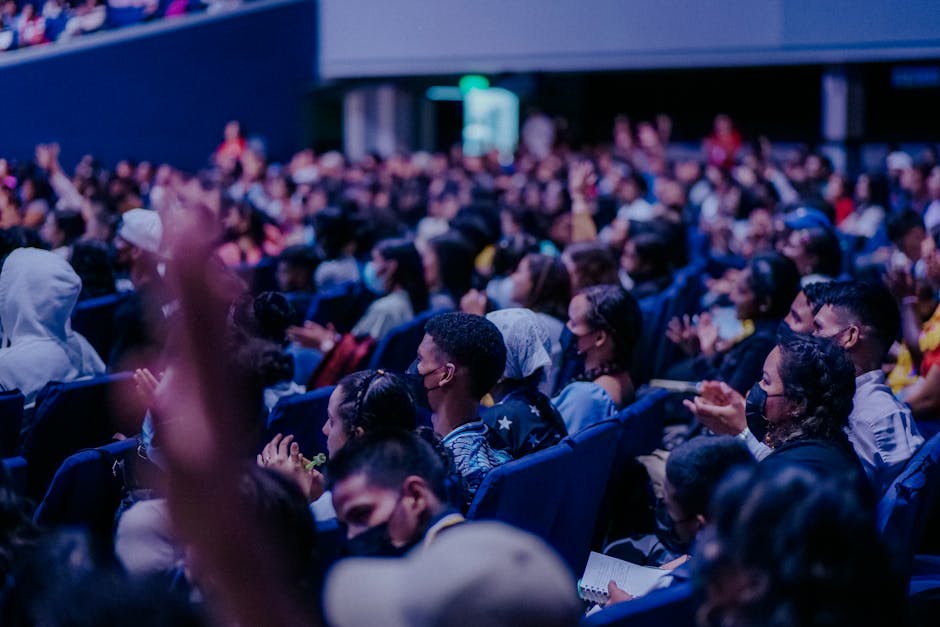Why Variety Shows Still Pull an Audience
Before streaming, before binges, even before cable—there were variety shows. Born in the early days of television, they were the original all-in-one box: song, dance, sketch comedy, interviews, a bit of magic, maybe a plate-spinning dog. Shows like “The Ed Sullivan Show,” “The Carol Burnett Show,” and “Saturday Night Live” didn’t just entertain; they built a kind of national rhythm. Families sat down together. The host was a household name. The whole thing felt like a weekly event.
That format proved stubbornly resilient. Why? Simple: it works. The core appeal is still strong—diverse content rolled into one, unpredictable formats, and the comfort of knowing that even if one act flops, the next might be gold. On top of that, variety shows flex easily. You can bolt on current trends, social commentary, viral challenges—whatever fits the moment—and it still feels natural.
And then there’s nostalgia. For many, variety TV taps into a simpler media era. For younger viewers, it’s a novelty wrapped in retro DNA. For older ones, it recalls slower evenings and family couches. It’s that blend of entertainment value, modular structure, and emotional memory that keeps the genre alive. Variety shows don’t need to dominate the ratings—they just need to keep evolving while staying rooted in what made them irresistible in the first place.
Reinventing the Format
Variety shows in 2024 are unrecognizable compared to the clean-cut talent competitions of even five years ago. Hybrid formats are the new normal—think celebrity interviews mixed with absurd challenges, improv comedy, or parody news segments. It’s chaos, but controlled. And it works. Audiences want a bit of everything, and shows are delivering.
Cross-genre mashups are also gaining traction. Some shows feel like documentaries but skip the dry tone. Others throw music festival energy into controlled studio environments. Korean and Japanese formats are leading the way here—concepts that start abroad are being adapted with local hosts, cultural nods, and humor that clicks with a homegrown audience.
Localization isn’t just translation—it’s transformation. A show like South Korea’s “Running Man” doesn’t just get copied; it gets re-built for each region with a fresh production style, local celebs, and references that actually land. The result: bigger reach, tighter retention, and a variety genre that stays two steps ahead of viewer fatigue.
Tech-Driven Engagement
Variety shows aren’t just entertaining anymore—they’re plugged in. Audiences aren’t sitting back; they’re tapping, swiping, and voting in real time. Live polls influence what happens on-screen. Mobile apps tether viewers to shows long after the credits roll. And second screens—phones, tablets, even smart TVs—are letting viewers shape outcomes, not just watch them.
On the production side, the tech upgrades are serious. Virtual sets and augmented reality are helping shows punch way above their budget class. Instead of building sprawling stages, teams drop in 3D environments that respond to lighting, camera angles, even dancer movements. Shows look richer, faster, and smarter—without blowing the cash.
And then there’s the data. Every vote, comment, and click is instant feedback. Writers are tightening jokes, segments are getting cut or expanded, and even host delivery is being fine-tuned—all mid-season. The smart shows use the data, but don’t let it turn everything into a formula. Viewers still want surprises—just served with a side of interactivity.
This isn’t the future anymore. It’s the baseline.
Diversity on Center Stage
The new wave of variety shows isn’t just about novel formats or flashy production—it’s also about who gets the spotlight. Rising creators and on-screen talent from underrepresented regions and communities are getting long-overdue recognition. From small-town singers to rural comedians, faces that wouldn’t have made it past old-school casting are not just getting airtime—they’re becoming household names.
Producers are finally paying attention. Inclusive casting isn’t treated like a favor anymore; it’s smart business. Audiences are global and fragmented, and nothing resonates like authenticity. Culturally specific stories, languages, and humor aren’t niche—they’re necessary. Whether it’s a regional dialect sketch or a segment on local traditions, producers are leaning into difference, not shying away from it.
And it’s paying off. Ratings are up. Online chatter is louder. Shows that take the diversity bet are seeing better engagement, stronger fan loyalty, and broader reach across age groups. In an oversaturated market, representation isn’t just the right thing—it’s the strategic move.
Streaming’s Influence
The binge mindset has officially cracked open the variety show format. Audiences aren’t waiting for weekly episodes anymore—they want full arcs in one sitting or tightly-paced spontaneity that hooks them fast. This shift is pushing producers to rethink structure. Episodic formats with long-term storylines are now living side-by-side with spontaneous, non-linear drops that feel looser but still land impact.
Platforms like Netflix and Viki are setting the tone with series-style variety content—carefully edited, story-driven, and meant to be consumed in chunks. Meanwhile, YouTube thrives on surprise: shorter episodes, faster edits, and formats built for quick turnaround. The user can bounce between creators, segments, and styles without missing a beat.
What’s significant is how geography no longer limits reach. A dance challenge filmed in Seoul or a prank competition in Rio can blow up in Berlin or LA, thanks to global subtitles, algorithm discovery, and mobile-first streaming habits. Without the chokehold of fixed time slots, variety shows are going worldwide—and audiences are choosing when, how, and how much to watch.
The takeaway? In 2024, flexibility wins. Whether it’s a five-part saga or a one-off sketch, if it’s engaging, it finds an audience.
Behind the Scenes: Smart Production
In the race to keep audiences engaged and costs manageable, variety shows are evolving behind the camera just as much as on screen. What once relied on sizable crews and large sets now thrives on lean operations, creative risk-taking, and closer relationships between talent and production.
Leaner Crews, Tighter Budgets, Sharper Ideas
Instead of scaling up, more successful variety productions are finding ways to scale smart. Budget constraints are encouraging sharper, more original thinking across all aspects of production.
- Smaller, multi-skilled teams are replacing bloated departments
- Compact set designs and remote shooting keep logistics manageable
- Creative direction is becoming more agile and experimental
This shift has led to a wave of innovation where necessity fuels invention.
Blurring the Line: Unscripted Meets Semi-Scripted
Many shows are ditching rigid formats in favor of more fluid storytelling. Viewers are gravitating toward segments that feel authentic—even if they’re partially structured behind the scenes.
- Improvised conversations mixed with planned beats
- Hybrid segments that combine real reactions with light scripting
- Flexibility to adapt mid-episode based on audience energy or feedback
The result? Programs that feel organic and captivating while still delivering polished entertainment.
Talent as Co-Producers
One of the biggest shifts: on-camera talent stepping into backstage roles. Performers are increasingly acting as creative partners, shaping the direction of episodes and making key production decisions.
- Hosts and cast members pitching segment ideas or formats
- Talent negotiating greater creative control in production deals
- Risks grow—but so does the sense of ownership and authenticity
This trend is leading to bolder, more personal shows that reflect the individuality of the stars leading them—shows that resonate deeply with audiences.
Behind the scenes, variety is becoming more than a genre; it’s a testing ground for television’s future. With leaner operations and empowered creators, the potential to reinvent entertainment is greater than ever.
What’s Catching Fire Right Now
Three sub-genres are making noise—and they’re not slowing down. Food competition shows have tightened their grip, not just with gourmet drama but with street food battles and absurd challenges (think blindfolded taste-offs or cooking with random ingredients). They’re quick to shoot, easy to edit, and built to go viral.
Social experiments are another wildfire. These aren’t just throwaway stunts. Viewers are drawn to emotionally raw or ethically charged setups—the kind that spark debates in the comments section. Done smartly, they raise questions. Done poorly, they get roasted—and sometimes, that’s what makes them spread faster.
Then there’s musical improvisation. Not your grandmother’s jazz night. We’re talking beat battles, genre flips, and flash songwriting exercises where artists are thrown prompts and given minutes to perform. It’s raw, chaotic, and surprisingly magnetic.
The secret sauce across these formats? Memeability. The best clips come preloaded with faces, fails, and moments made to be screenshotted and shared. For a deeper look at how crossover content is boosting variety show virality, check out Top Movie Reviews: Must-See Films of the Year. These creative overlaps are pushing shows beyond the stage—and into the timeline.
Where It’s All Headed
As entertainment platforms multiply and audiences become more fragmented, variety shows are poised to evolve in fascinating—and sometimes unpredictable—ways. Innovation will play a central role, but not at the expense of emotional connection.
Future Trends to Watch
- AI Experimentation: Expect to see more AI-generated hosts and performers, used primarily for novelty or as digital co-hosts. These experiments may increase efficiency but are unlikely to fully replace human personalities.
- Artificial voices or avatars might handle trivia, transitions, or interactive quizzes
- Success will depend on how seamlessly they blend with real performers
- Interactive Storytelling: Audience engagement will no longer be a bonus—it’ll become expected. Advances in technology will allow viewers to shape segments in real time.
- Think live voting, plot direction choices, or choosing outcomes of game segments
- Integration with apps and smart TVs will boost participation
- Global Formats, Local Flavor: International collaboration will expand. Popular formats from one region will be reimagined with local hosts, languages, and themes, creating variety hits that feel both fresh and familiar.
Staying Human: The Non-Negotiable Factor
No matter how tech-savvy or format-bending a variety show gets, one thing remains clear: audiences crave authenticity. The most successful shows will prioritize genuine talent, spontaneous chemistry, and emotional resonance.
Key Takeaway:
- The future of variety is hybrid—part machine, part magic—but the heart of the genre still belongs to humans
- Technology can amplify entertainment value, but relatability keeps people watching
Looking Ahead
Variety shows that strike a balance between innovation and emotional intelligence will define the next generation of entertainment. Instead of asking “Can we use this new tool?” the smart creators will ask, “Does it make the human story better?” That’s where the future lies.
Bottom Line
Innovation Is the Future of Variety
The variety shows that will lead the next wave of entertainment aren’t necessarily the flashiest—they’re the most inventive. Audiences are savvier, attention is more fragmented, and competition is steep. What cuts through the noise? Originality, spontaneity, and a clear creative voice.
- Consistent reinvention keeps viewers engaged
- Audiences crave something they haven’t seen before
- Variety is about versatility—shows that blend formats and defy expectations are winning
It’s Not About Budget—It’s About Brilliance
High production value can help, but it’s not the dealbreaker it once was. What matters most now is whether a show understands its audience and delivers moments that resonate.
- Sharp writing and well-paced editing beat flashy effects
- Authentic talent with personality outshines scripted perfection
- Resourcefulness and strong creative direction do more than big spending ever could
Authentic Fun Wins
At the heart of every successful variety show is a sense of joy. Whether it’s unpredictable games, heartwarming interactions, or laugh-out-loud moments, that joy is what pulls audiences in and keeps them watching.
- Entertainment that feels genuine builds loyal fans
- Fun doesn’t need to be forced—let the chaos breathe a little
- The best variety shows know their sweet spot between chaos and control
By focusing on smart ideas, intentional formatting, and real connection, variety shows have a clear path ahead. It’s not just about keeping up—it’s about standing out.




